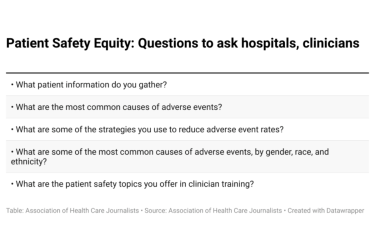 Investigative journalism from Stat News, Wired and the New York Times recently revealed how the alcohol industry is influencing the kind of research the National Institutes of Health will conduct as the NIH seeks funding for alcohol research. That story simply adds more evidence to what some journalists and public health folks have been pointing out: alcohol is one of the most dangerous, destructive drugs there is, but it rarely gets treated as such.
Investigative journalism from Stat News, Wired and the New York Times recently revealed how the alcohol industry is influencing the kind of research the National Institutes of Health will conduct as the NIH seeks funding for alcohol research. That story simply adds more evidence to what some journalists and public health folks have been pointing out: alcohol is one of the most dangerous, destructive drugs there is, but it rarely gets treated as such.
In the U.S., tobacco is the number one killing drug, but alcohol isn’t that far behind – despite the (deserved) attention opiates and other drugs receive. Just how much does alcohol harm public and individual health, what are the trends in alcohol drinking, what populations are at highest risk for alcohol use disorder, what alcohol-related stories should journalists be pursuing, how much alcohol in pregnancy really is a problem…
Those are just some of the questions journalist and author Gabrielle Glaser, pediatrician Yasmin Senturias and epidemiologist Richard Grucza will discuss on Friday afternoon during Health Journalism 2018 in Phoenix. Want a sneak peek at what some of the panelists will discuss? Check out what Glaser and Grucza are looking forward to talking about in this brief Q&A.
What are you most looking forward to discussing during the session?

Glaser, author of Her Best-Kept Secret: Why Women Drink — And How They Can Regain Control: “As much as we recognize the increase in drinking in the U.S., particularly among women, it is crucial that people understand that there is a new paradigm for treating risky consumption before, during, and even after it gets out of hand. Science has recognized for decades that there are many paths to recovery, whether it’s abstinence, moderation, or harm reduction.
Yet popular culture and many uninformed medical professionals cling to the notion that the only thing that truly works is an 80-year-old faith-and-abstinence based method that is rooted in evangelical Christianity and attaches harmful labels to those who develop issues with drinking.
It’s time for society to catch up in understanding there are many science-based methods for approaching alcohol-use disorder. We also need to be able to talk about this issue openly, and shed some light on it. People feel so ashamed if they find themselves drinking too much. If people eat too much, it’s hard not to hide. But overdrinking remains in the closet.
I appreciate it when journalists highlight the recoveries of people who’ve been able to find methods that work for them, whether it’s using moderation-based apps or resetting their brains by taking January off (although I know the science is out on that). Unfortunately, we continue to see addiction memoirs churn out, and they repeat the same narrative: Person discovers drinking as life’s elixir; person spirals downward with drinking; person loses mind with drinking; person walks into AA and finds The Answer.
Whether problem drinkers find tools to recover on their own, or need to conduct a broad search to find the appropriate, scientifically trained mental health professional, it’s important to educate readers, viewers and listeners that risky drinkers don’t have to end up dead, in jail, or an institution if they don’t walk the one true path.”

Grucza, a professor of psychiatry at Washington University School of Medicine: “One myth people believe is that heavy drinking is a young peoples’ problem. Rates of heavy drinking among older Americans, especially those 50 and up, have increased sharply over the last decade. Young people still drink the most, but the majority of people seen in emergency rooms for alcohol-related issues are middle-aged and older. And high school students are drinking less than ever — and getting into other kinds of trouble less and less as well.
As Gabrielle covered, other myths are that alcoholism is a black-and-white condition rather than a spectrum and that 12-step programs and abstinence only approaches are the gold standards.
I’m glad to see journalists doing a good job with data-based fact-checking when reporting on alcohol. There is a lot of data out there about alcohol use and problem drinking — and alcohol problems — and it’s important to consider data from multiple sources.
Also, I am seeing more focus on just how many problems alcohol causes. I think more journalists are recognizing both the short- and long-term dangers of drinking. But I’d like to see journalists be more skeptical of scare-statistics, such as a 50 percent increase in alcohol use disorder prevalence among adults over ten years.
In addition to often being based on sparse data, there is a journalistic publication bias toward bad news. It is just as important — and supported by multiple data sources — that high-school binge drinking has decreased 40-50% over ten years.”
Want to hear more? Join the discussion on Friday afternoon! In the meantime, look for Gabrielle Glaser and Richard Grucza on Twitter.










